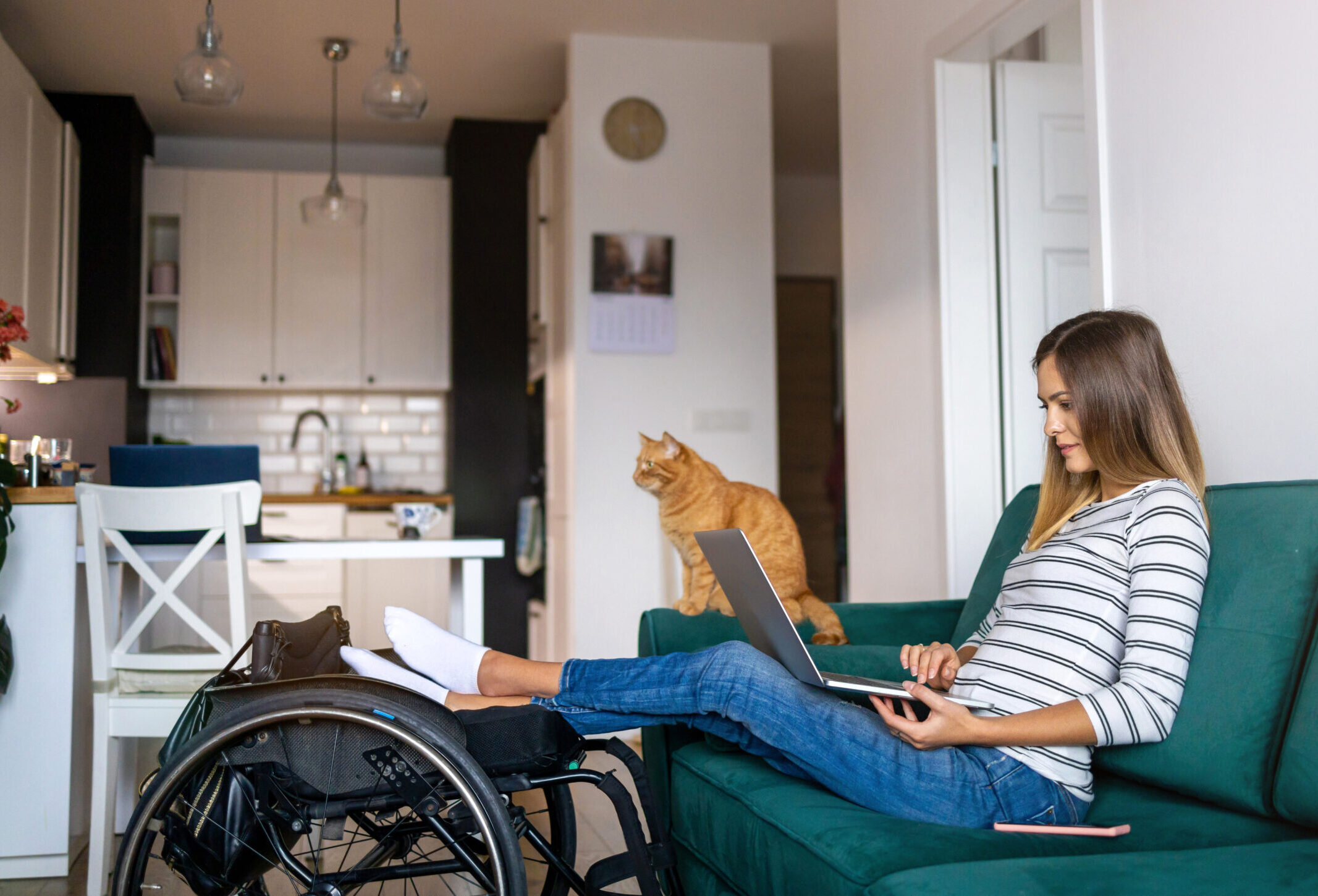Question: I’m looking for a new accessible apartment and am confused. Can someone explain what accessibility means in terms of apartment buildings?
Most of the apartments I’m being shown are barely accessible. I found one with grab bars and enough space to turn around in the bathroom. But it is government subsidized, and my income is too high for me to qualify.
* * * * *
Answer: Most state and local building codes contain requirements for two different types of wheelchair “accessible” apartment units. But they differ significantly.
The most accessible unit type in non-subsidized housing is a “Type A dwelling unit.” This unit type is just about move-in ready. All the spaces, fixtures, and doorways are accessible. But some features, such as bathroom grab bars, may not yet be installed. And there may be removable base cabinets under the kitchen and bath sinks.
“Type B dwelling units,” less accessible and far more common, are another story altogether. The category “Type B dwelling unit” was created in building codes in response to the minimal design and construction requirements of the 1988 Fair Housing Amendments Act.
The FHAA protected individuals with disabilities from housing discrimination under U.S. law for the first time ever. It also revolutionized the way accessibility was built-in to residential buildings. Prior to the FHAA, many states required 5% of apartment units to be mobility accessible (Type A). However, building owners and people with disabilities complained that there were so few accessible units that it was difficult to match apartment hunters with available units. Their solution was to require all apartments in buildings with four or more units to be designed and constructed per FHAA design and construction criteria (Type B units).
But this came at a price.
Most state or local building codes reduced the number of Type A units to 2% and only for buildings with 20 or more units. This change made it even harder to find a move-in-ready unit. While a few jurisdictions increased the number of Type A units required to as much as 15%, some states, like Maryland, eliminated Type A units altogether.
FHAA-accessible is far from actually-accessible
Type B dwelling units built to today’s building codes meet or exceed the requirements of the FHAA. But they usually are not accessible to people with severe mobility disabilities without modifications, which are sometimes very costly.
For example, Type B apartments need not provide a turning space in the bathroom. You may need to re-swing the door into a hallway so you can enter, turn around and close the door for privacy. And sometimes, plumbing fixtures may need to be changed or the walls moved. There is an expectation that you can use a kitchen or bathroom sink from a side approach or change it to suit your needs. But, while all doors are wide enough for most wheelchair users, there is no requirement for maneuvering space at interior doors other than the unit entry.
Who pays for modifications?
You will, most likely.
Most housing is found in the private sector. This means the rents are unsubsidized or fair-market, and the buildings are designed and built without government funds or other support. The FHAA requires the tenant to pay for accessibility modifications to the physical environment in fair-market housing. Depending on your agreement with the landlord, you may also have to pay to remove added accessibility features you move, which may require an escrow account.
The FHAA also requires landlords to make “reasonable accommodations” in their rules, policies, practices, or services to avoid discrimination on the basis of disability. Reasonable accommodations rarely cost the landlord money. When there is a cost, the landlord must absorb it themselves.
Here is more information on how the FHAA covers reasonable modifications and accommodations:
- JOINT STATEMENT OF THE DEPARTMENT OF HOUSING AND URBAN DEVELOPMENT AND THE DEPARTMENT OF JUSTICE: REASONABLE MODIFICATIONS UNDER THE FAIR HOUSING ACT.
- JOINT STATEMENT OF THE DEPARTMENT OF HOUSING AND URBAN DEVELOPMENT AND THE DEPARTMENT OF JUSTICE REASONABLE ACCOMMODATIONS UNDER THE FAIR HOUSING ACT.
A word on subsidized accessible housing
This blog is about private-sector housing. But I want to acknowledge that housing provided by federal, state, or local governments or that receives government funding for design and construction is likely subject to Section 504 of the Rehabilitation Act of 1973 and the FHAA. Under Section 504, the landlord is responsible for paying for reasonable modifications and making reasonable accommodations at their own expense.
—Marsha Mazz


